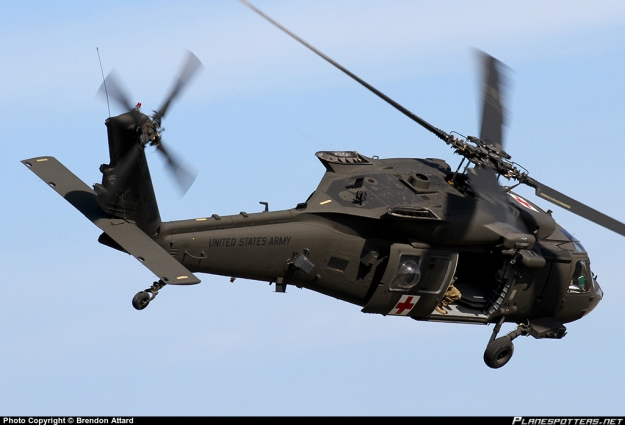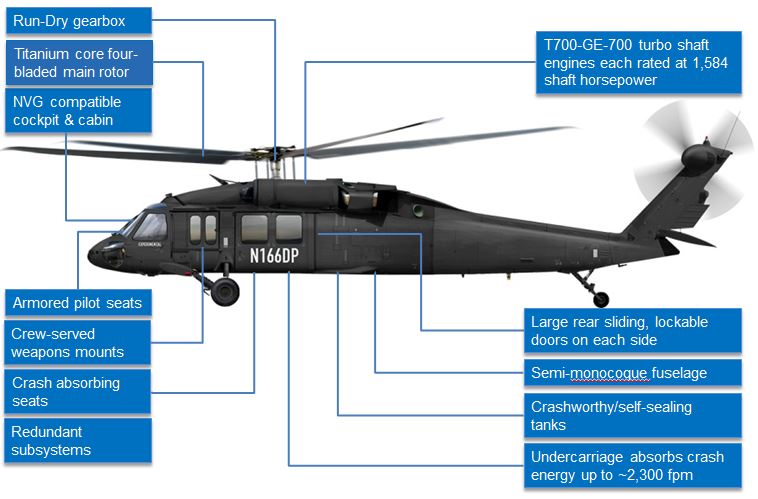Understanding the Skies: UH 60 Helicopter Upkeep List
Understanding the Skies: UH 60 Helicopter Upkeep List
Blog Article
Comprehending the Mechanics and Engineering Behind Uh 60 Helicopters
The UH-60 helicopter, generally understood as the Black Hawk, stands as a peak of modern-day rotorcraft modern technology, personifying a mix of durable design and detailed technicians. From its creation to its current models, the evolution of this aircraft showcases a combination of technology and practicality. As we peel off back the layers of the UH-60's design, a globe of detailed systems and precise engineering emerges. Comprehending the technicians and design behind this flexible aircraft introduces a world where accuracy meets power, and where each part plays a vital duty in achieving flight.
Background of UH-60 Helicopters
The background of UH-60 helicopters traces back to the late 1970s when the USA Military sought a functional and sophisticated utility helicopter to replace its aging fleet. In action to this requirement, the Sikorsky Airplane Corporation created the UH-60 Black Hawk helicopter. Presented in 1979, the UH-60 swiftly ended up being a staple in military operations because of its outstanding capacities.
The UH-60 was created to excel in a selection of goals, consisting of troop transportation, clinical discharge, electronic warfare, and unique procedures. Its capability to adjust to different functions made it a valuable asset to the united state Military and other military pressures around the globe
Over the years, the UH-60 system has gone through numerous upgrades and variants to enhance its performance and keep pace with progressing goal needs. These helicopters have seen extensive service in conflicts such as the Gulf Battle, Afghanistan, and Iraq, showcasing their integrity and versatility in varied functional settings. The UH-60's rich history is a testament to its long-lasting heritage as a top energy helicopter.

Engine and Power Solutions
Using sophisticated propulsion technology, UH-60 helicopters are geared up with advanced engine and power systems to make certain ideal performance and dependability in a variety of operational scenarios. The UH-60, frequently referred to as the Black Hawk, is powered by 2 General Electric T700-GE-701D engines, each efficient in supplying up to 1,940 shaft horse power. These turboshaft engines provide the required drive for the helicopter to perform its objectives successfully, including troop transport, medical evacuation, and fight support.

Rotor System and Aerodynamics
How do the blades system and the rules of aerodynamics of UH-60 helicopters add to their operational effectiveness and trip capabilities? The rotor system of the UH-60 helicopter plays a critical function in providing lift and propulsion. The UH-60 features a four-bladed, fully expressed rotor system that enables high maneuverability and security throughout trip. This style allows the helicopter to perform a vast array of goals, from transportation and medical evacuation to deal with procedures.
The rules of aerodynamics additionally play a vital function in the efficiency of UH-60 helicopters. The structured fuselage and blades blade layout minimize drag, permitting the helicopter to accomplish higher rates and better fuel effectiveness. The wind resistant design of the UH-60 also adds to its ability to run in varied ecological conditions, including high altitudes and hot temperature levels.
Avionics and Trip Control Equipment

In its detailed coordination with the rotor system and aerodynamics of UH-60 helicopters, the avionics and flight control systems form a vital network of modern technologies shaping the airplane's operational capacities. In the UH-60, these systems include electronic displays, interaction radios, General practitioner navigating, weather radar, and autopilot systems.
The trip control systems of the UH-60 are accountable for equating the pilot's inputs right into the appropriate changes to the blades system, making sure steady trip and maneuverability. These systems consist of hydraulic actuators, servos, and computers that interact to control the primary and tail rotors, check as well as various other flight control surfaces. By specifically managing the helicopter's flight dynamics, these systems make it possible for pilots to carry out a variety of goals, from transport and search-and-rescue to fight operations, with accuracy and confidence.
Role and Applications in Aeronautics
The role and applications see this site of avionics and trip control systems in air travel are important to making sure the risk-free and efficient procedure of airplane, consisting of UH-60 helicopters. Avionics systems in UH-60 helicopters include a series of digital systems that help in navigation, interaction, tracking, and controlling various airplane features. These systems include digital display screens, autopilot systems, interaction radios, general practitioner navigating equipment, and weather radar. Flight control systems play a critical function in steering the helicopter in the air, preserving stability, and guaranteeing accurate movements. The fly-by-wire innovation made use of in contemporary UH-60 helicopters converts pilot inputs into electronic signals, which are after that interpreted by the trip control computers to readjust the aircraft's control surfaces. Additionally, these systems incorporate safety and security attributes such as auto-pilot modes, terrain recognition advising systems, and security enhancement systems to improve the total security and operational capacities of the UH-60 helicopters in various goals, including army transportation, medical discharge, search and rescue, and aerial firefighting.
Conclusion
To conclude, the UH-60 helicopter is a functional airplane with a rich history and progressed engineering. Its engine and power systems, blades system, aerodynamics, avionics, and trip control systems all interact to make it a dependable and efficient equipment. The UH-60's duty and applications in air travel are large, varying from army procedures to browse and rescue missions. Its proceeded growth and usage demonstrate its relevance in the area of aviation (uh 60).
In its intricate control with the have a peek here blades system and the rules of aerodynamics of UH-60 helicopters, the avionics and trip control systems create a critical network of technologies forming the airplane's operational abilities.The trip control systems of the UH-60 are accountable for converting the pilot's inputs right into the appropriate changes to the rotor system, making sure stable trip and ability to move. Avionics systems in UH-60 helicopters encompass an array of electronic systems that help in navigation, interaction, tracking, and regulating numerous airplane features. In addition, these systems incorporate safety functions such as autopilot modes, terrain awareness alerting systems, and security enhancement systems to boost the overall security and operational abilities of the UH-60 helicopters in numerous missions, including troop transport, clinical evacuation, search and rescue, and airborne firefighting.
Its engine and power systems, rotor system, aerodynamics, avionics, and trip control systems all function with each other to make it a reliable and effective maker.
Report this page